Inside a shelter for displaced Ukrainian children
Children deprived of loving, stable homes before the war, and from places hit hard by Russia, find support in a Lviv home.
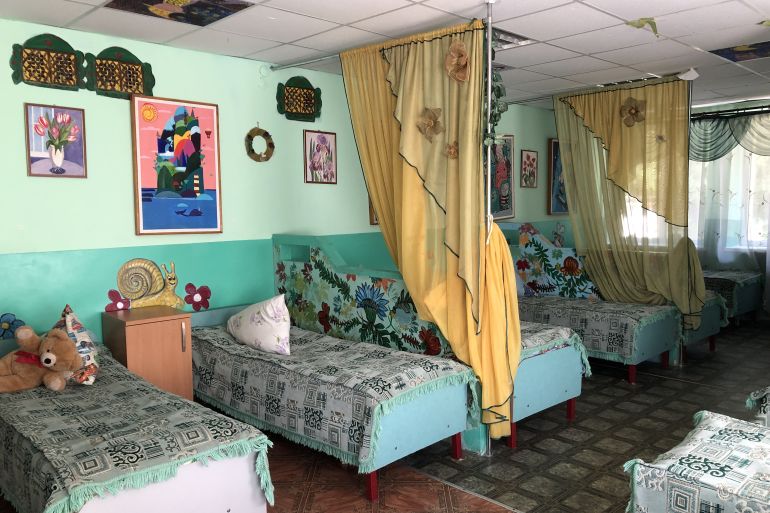
Lviv, Ukraine – When Russia first started shelling close to the eastern Ukrainian city of Lysychansk, 11-year-old Alisa hid in the basement of her “internat” – a residential facility for orphans and children whose families cannot afford to care for them.
“I heard lots of explosions outside, and felt very scared,” she says hesitantly. “But my friends kept talking to me and helped to calm me down.” Still, she worried the shelling would last forever.
Keep reading
list of 4 itemsUkrainians sigh with relief as US unlocks aid but say it won’t repel Russia
Qatar hails mediation ‘milestone’ as it hosts freed Ukrainian, Russian kids
US secretly sent long-range ATACMS weapons to Ukraine
But later that day, February 24, her teachers decided that Lysychansk was no longer safe. With Alisa and about 20 other children from the internat, they boarded a train. The journey would take roughly 24 hours. The cramped conditions on board and the fear of being bombed en route left the children in a state of anxiety: some of them vomited or developed a fever.
On February 26, exhausted and confused, Alisa and the others arrived at a state-run shelter in Lviv for children who had lost their parents or been separated from them. The shelter’s administrators asked that it not be named by Al Jazeera, explaining that at the beginning of the war pro-Russian saboteurs had marked out its roof as a target for aerial attacks.
Wide-eyed, thin and tall for her age, Alisa is timid when recounting her experiences of the war.
Having grown up speaking Russian, Alisa found herself suddenly surrounded by adults and other children who spoke only Ukrainian. Nevertheless, she warmed to her new home quickly.
“I like it here; volunteers come and do fun things with us. My favourite activity is drawing and making art,” she says shyly, taking out an elaborate piece of beadwork that she recently completed. Alisa says that most of her friends from the internat in Lysychansk are now abroad, where they are either living in similar institutions or with foster families who reached out offering to provide a home to some of the children.
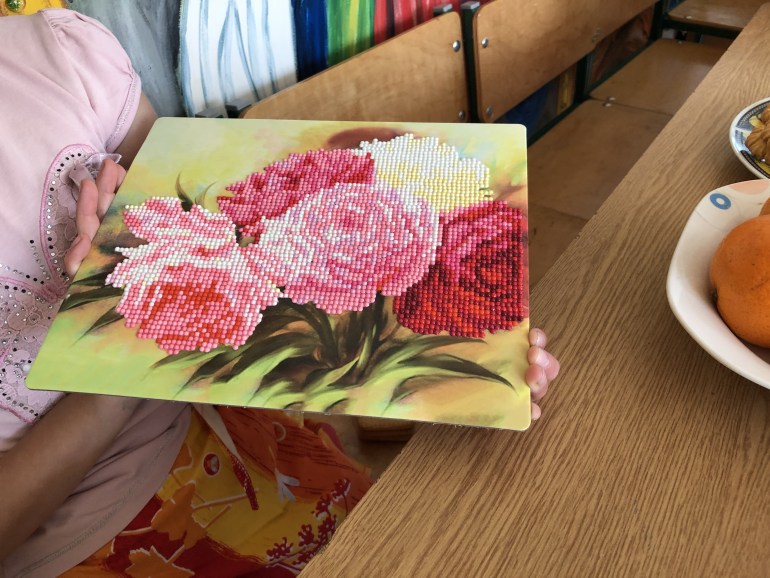
A sanctuary
Other than Alisa, 42 children and teens aged between three and 18 live in this state-run establishment, which opened in 1996. Tucked away in a nondescript neighbourhood, the only hint that the shelter is a sanctuary for children is its brightly-coloured gates. But inside, it resembles the pages of an illustrated book. The walls of the bedrooms and common areas are either adorned with children’s art or covered in murals that its young residents have painted over almost three decades.
It was originally built to house 25 children who would stay for no longer than three months while alternative homes were sought for them. But in the immediate months after the war broke out, the shelter operated at more than double its capacity, as children started arriving from other parts of the country.
Some like Alisa had been evacuated by their teachers from orphanages or similar temporary shelters in regions under Russian occupation. Others had been put on trains by their families. As of the start of October, 229 children have passed through its doors. Most of them come from the parts of northern and eastern Ukraine most aggressively targeted by Russia: Chernihiv, Kherson, Lysychansk and Zaporizhia.
According to the United Nations, more than half of Ukraine’s 7.5 million children were displaced just one month into the war. Of this figure, there has been far less visibility around the 100,000 or so who, like Alisa, had been placed in different types of institutional care before the invasion began.
These include the detskiy dom or home for orphans and children abandoned by their parents, and the internat, which Ukrainians refer to as a “boarding school”, where some of the children stay permanently while others are able to visit their families on weekends.
A substantial proportion of the children living in an internat come from impoverished families or have parents who suffer from drug addiction and alcoholism. Some of the young residents of the internat have disabilities and are given up by their parents due to a dearth of community services and support.
But these facilities – there are more than 700 across Ukraine – do not always offer children a brighter future. In 2015, the United States-based advocacy group Disability Rights International concluded a three-year-long investigation exposing the exploitation of institutionalised children in Ukraine, many of whom are abused or end up being trafficked by their caregivers.
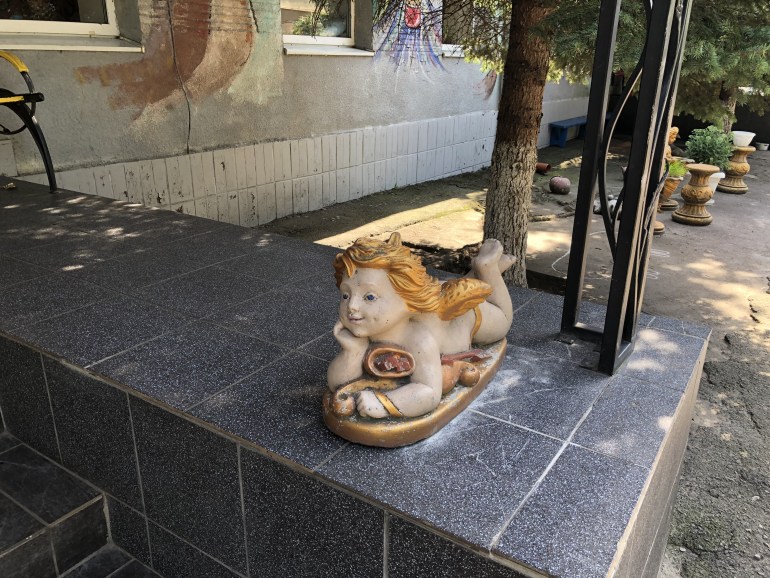
Fears of more trauma
Now, fears have surfaced within the social services sector that thousands of these children – who were already deprived of loving, stable homes before the war – will be plunged even further into disadvantage and trauma.
Stepan Pasichnyk, a psychologist with Malteser International, a humanitarian relief NGO that has been active in the front-line regions of Donetsk and Luhansk since 2015, says that children who have experienced layer upon layer of trauma need long-term care and constant support. “A one-time psychological intervention is not enough,” he explains.
Meanwhile, shelters like this one in Lviv strain under the sudden staggering need for their services, while the children wait to be reunited with their parents wherever possible or sent to foster families.
Fifty-year-old Halyna Malanchuk is a stalwart of this Lviv shelter. She began her employment as a teacher and administrator 25 years ago, when she was just beginning to train in the social services sector. With her reddish-brown hair swept up into a bun and sharp eyes peering through crimson-framed glasses, Malanchuk comes across as stern at first but occasionally breaks into a wide grin, revealing a humorous side.
As she shows Al Jazeera around the shelter, she takes great pride in having been a longtime witness to its history. “Everything here is made by the kids,” she says, patting an intricate mosaic made of scrap tiles laid over one of the archways.
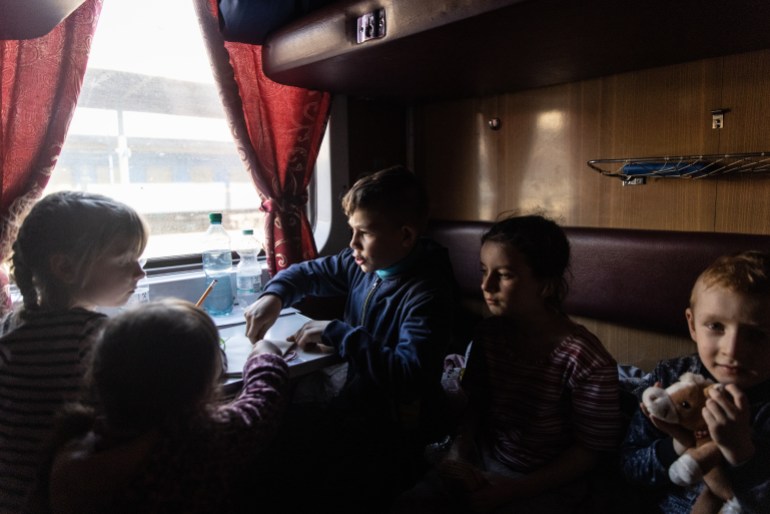
‘Nothing can replace the family unit’
For half her lifetime, Malanchuk has cared for the approximately 7,000 children and teens who have lived at the shelter. Many of them continue to keep in touch with her via social media, but she is vehement that she should not be regarded as a mother figure.
“Nothing can replace the family unit,” she emphasises. “I can only give them the skills to lead independent lives. Ultimately, children shouldn’t be in such places. Even for institutions like the internat, we are hopefully moving in a direction where they no longer need to exist, and where every child can grow up in a safe home.”
Malanchuk was shocked by the physical condition of the new arrivals from eastern Ukraine during the early days of the war. “Some of them had really poor personal hygiene,” she recalls. “They had never been taught to wash their hands or take a shower, and we were starting totally from scratch. I had to help them with these basic things – how to brush their teeth, how to get dressed, how to make their beds.”
Volunteers bought soap and shampoo for the shelter. Although the children understand that they need to head to the basement when air raid sirens sound in Lviv, some of them are still extremely frightened and cry a lot. A doctor has been called in to treat those who have physical ailments or disabilities, while psychologists have also been visiting regularly to offer counselling to the children.
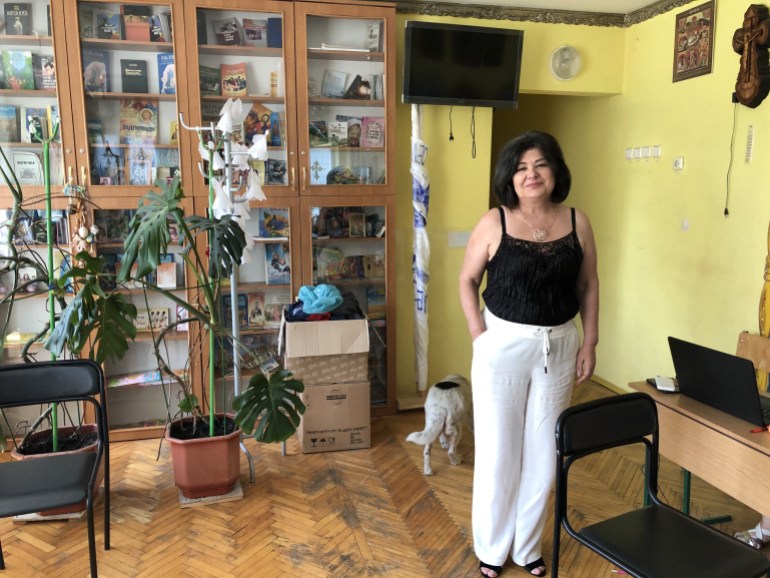
Encouraged to speak Ukrainian
Another thing that Malanchuk actively promotes is to encourage the children – almost all of whom are from Russian-speaking regions – to interact with one another in Ukrainian. She introduces them to songs and other forms of entertainment.
“It was heartbreaking to me that they spoke in the language of our occupiers,” she says. “We don’t force them to do anything, and they’re free to listen to Russian music on their phones if they like. But I make it clear that in the communal areas, we should speak the national language.” She adds that the children have been quick to adapt.
Antonyna Sorochynska, a psychologist at Voices of Children, a charity offering psychological support to Ukrainian children who have suffered as a result of the war, cautions that ethnic Russian or Russian-speaking children from the east and south who have experienced trauma face “additional stress when switching to a language that is still foreign to them, namely Ukrainian”.
She says that volunteers with the charity in Lviv observed that there was occasionally tension when locals only spoke Ukrainian to Russian-speaking children and their families, especially in places like schools. Sorochynska says she and other volunteer psychologists speak to displaced children in the language they are most comfortable with in order to “create a safe space”. She calls this the “practice of gentle Ukrainisation”, where children are gradually taught Ukrainian through storytelling and by slowly explaining the meaning of words, to ease them into their new life.
The shelter’s director, Svitlana Havryliuk, is perpetually busy working with other state agencies and volunteer groups to ensure that the children’s needs are met. Before rushing to her next meeting, Havryliuk, who is dark-haired and bears herself with the dignified air of a matriarch, sits down for a quick breather in a room crowded with religious-themed paintings. Her mood is slightly pensive as she snacks on oranges while chatting about the displaced children at the shelter.
“Generally, it’s been very stressful. These children come from very hard conditions and basic care is not enough for them. When they arrived, they were so traumatised that they became very aggressive. They acted out by smoking, drinking and fighting a lot with one another. You could really feel how depressed they were,” Havryliuk recounts. On February 26, the first day that the shelter took in evacuees from the east, some of the new arrivals smashed down three doors. Today, this sort of behaviour is “90 percent gone”, she adds.
Havryliuk takes it upon herself to learn each child’s story. Many of them bear the scars of deep emotional damage, having undergone tremendous distress during the war. A boy from the Luhansk province within the Donbas region, where fighting has been the most intense, reported seeing rotting bodies piled atop a car. When the vehicle was towed away, a river of blood flowed down its sides, he told Havryliuk.
Another boy from the same area arrived emaciated and filthy, having lived for one month in a basement with no light and scarcely enough food. Other children spoke of seeking refuge in a hospital basement before they came to Lviv, only for the hospital itself to be bombed. “They were just eating bread and jam for 30 days straight,” she says.
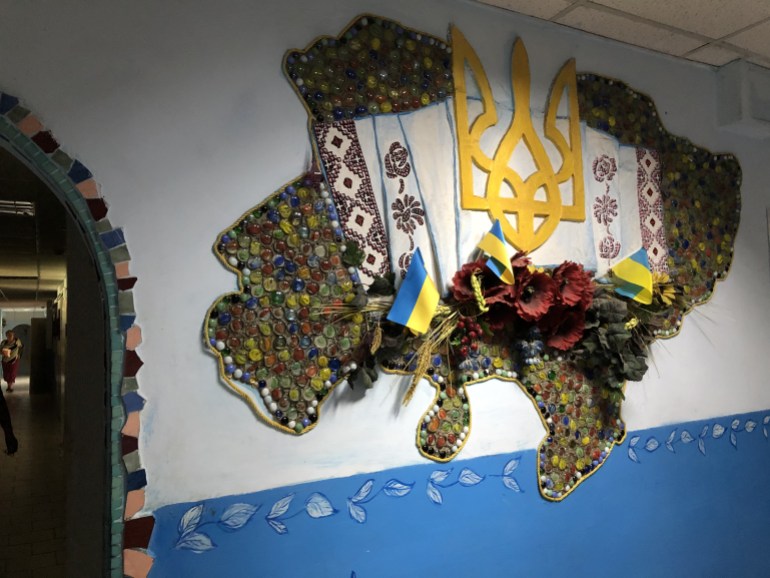
Nowhere to go
Havryliuk worries most about those who had suffered abuse before they were evacuated from the east. “We are not just having to provide care to children whose houses are destroyed. For example, one of the girls living here now had been living with a mother who fell into bad company and became an alcoholic. She tried to sell the girl for a bottle of vodka,” she says.
Two of the shelter’s new residents are a pair of siblings of elementary school age who had been taken into state care prior to the war. Their mother had locked them in a car for hours while she was out drinking. “When they found the children, their skin was badly burned from the time they were sitting under direct sunlight,” Havryliuk remembers gloomily.
A few miles away in the city centre, Volodymyr Lys, who heads Children’s Services at Lviv’s regional administration, has also been helping the shelter conduct research through national databases, to locate parents and guardians. Those alive and able to take on caregiving responsibilities are almost always reunited with their children. “It was very messy and not systemised at all when the war started, and not easy to find the parents,” he admits.
“Some of these family members may have been seriously injured and trapped under rubble or held captive for a time [by the Russians],” Lys says. “Since the war started, 35 children at this shelter, some from Mariupol [a city in the east that was razed by relentless assaults) have managed to see their parents again. But others are not so lucky. They have been in the shelter since the beginning, and have nowhere to go.”
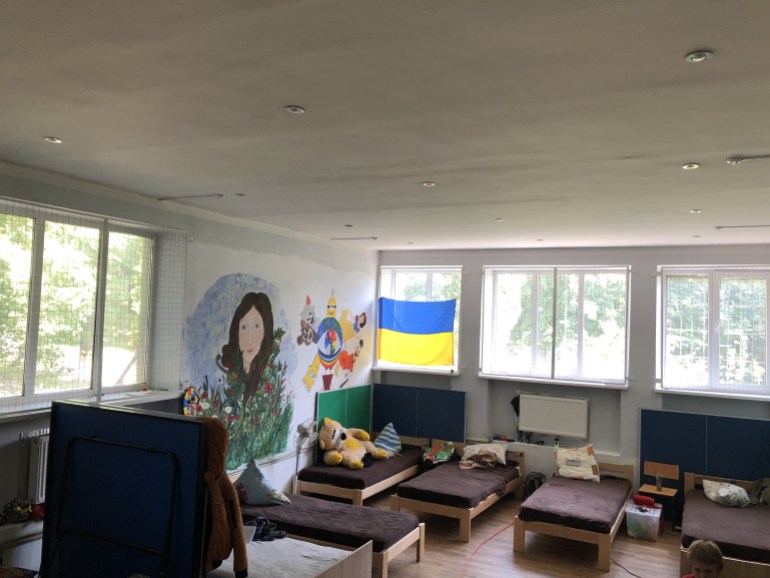
‘A summer without anxiety’
As school was closed through the summer, volunteers and teachers took the children on regular trips to the outdoors, including the Carpathian Mountains.
“They have gone through a lot, being far away from home and having lived in fear of bombardments. We just want to give them a summer without anxiety,” Lys explains.
In total, Lys says, the Lviv region is hosting 800 children and teens across 26 such shelters today. With support pouring in from international NGOs, the initial logistical difficulties encountered by these shelters, from the lack of beds to insufficient psychological help and clothes for the children, have mostly been overcome.
One child who managed to see her parents again during her time at the shelter is 11-year-old Yuliia, who is also from Lysychansk. Today, she is looking forward to seeing her mother for an outing after lunch. With her hair cropped in a pixie cut, Yuliia is curious and cheerful when talking about memories of her hometown.
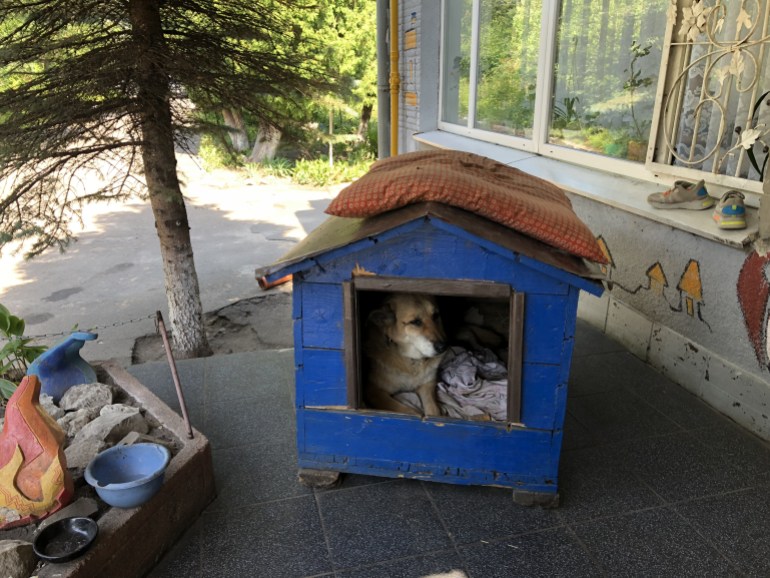
“I liked all my subjects, and the school was just opposite my house,” she says. “Since the war started, one of my teachers died. My mother told me so.” She speaks of her mother fondly, saying that one of her favourite things to do is to help her make borscht soup. But when asked what her parents do, Yuliia looks perplexed.
Later, Malanchuk says that Yuliia had lived in a similar shelter while in Lysychansk. One of the caretakers put her on a train to Lviv, and she arrived on the same day as Alisa.
Life at the shelter has been enjoyable for Yuliia, who likes spending time in the playground. Still, occasional dark moods have loomed over her otherwise fairly peaceful existence for the past few months, as there are occasional conflicts with other children. She dashes off to find a prized toy – one of the few things she had brought from home – and slinks back to the room a minute later with a crestfallen expression. “The older girls locked me out of the bedroom and won’t let me come in,” she says, looking ready to cry.
Despite such moments of tension, Malanchuk is steadfastly, if cautiously, optimistic about the children’s future. “In a way, things are better now than they were in the past, when I first started. There wasn’t always enough food for the children, but now we even have food to offer guests,” she says, gesturing at a tin of cookies laid out on a table.
Recently, she has been perturbed by the photograph of a father grieving over the lifeless body of his 13-year-old son, who was killed by shelling near a bus stop in Ukraine’s second-largest city of Kharkiv.
In the room above her, the children are having an art class, and mirthful shouting is sporadically audible. “We may not have a lot, but money can’t buy you peace anyway. And without peace, nothing else in life is relevant.”